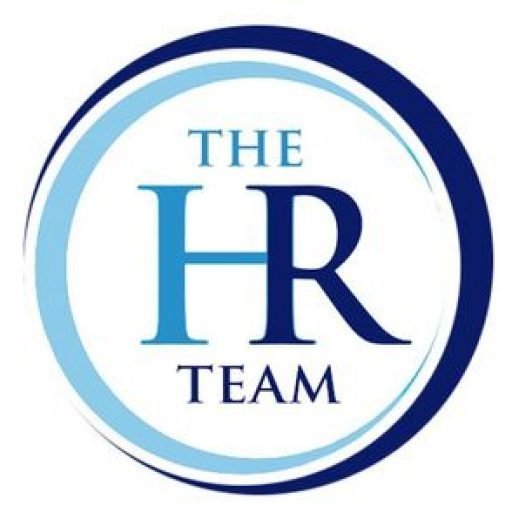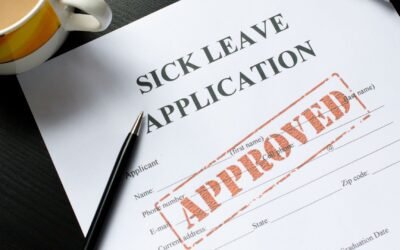The Leap Year, Protected Notice Pay & Paternity Leave…
What does a leap year mean for employers?
29th February does not come around very often; only every four years in fact. And this year, 2024, is one of those years. But what difference does it make for employers, and will it mean workers need to be paid an extra day’s pay? This month, we look at leap years and their implications in the workplace.
Background
Every four years, there’s an extra day at the end of February. It’s called a “leap day” and it means that February becomes 29 days long, and the year becomes 366 days long. This year, it’s on a Thursday.
Leap years exist because a single year in the Gregorian calendar is slightly shorter than a solar year, or the amount of time it takes for Earth to completely orbit the sun once. A calendar year is exactly 365 days long, but a solar year is roughly 365.24 days long, or 365 days, five hours, 48 minutes and 56 seconds. Failing to account for this difference would mean that for each year that passes, the gap between the start of a calendar year and a solar year would widen by five hours, 48 minutes and 56 seconds. Over time, this would shift the timing of the seasons which would impact on many aspects of day-to-day life.
What it means for employers
Workers may ask if they get paid for an extra day in a leap year. It is an extra day, after all, and with it being on a Thursday this year, many will see it as an additional working day. However, the answer isn’t as simple as that. It all depends on their pay structure.
Hourly paid workers
In the case of an hourly paid worker who has a pay reference period of one week, i.e. they’re paid weekly, they will not see any actual difference in their pay because the number of days worked in their pay reference period has not changed — a leap day does not mean a seven-day week becomes an eight-day week, so these workers will have worked their usual hours.
When it comes to an hourly paid worker with a pay reference period of one month, i.e. they’re paid monthly, they will see an increase because the number of days worked in the pay reference period has changed; they will work for 21 days in February rather than the usual 20 days. Therefore, they are owed an extra day’s pay because they have worked an extra day.
Salaried workers
Salaried workers will not see any difference in pay because they are paid with reference to the year and not the hours worked. However, for workers who are paid at the National Living/Minimum Wage, it’s worth running a compliance check to make sure there are no breaches around the leap day.
Leap day and key dates
Pay day
Where employees are paid on the last day of the month, this can mean workers are paid their February pay a day later than is usual, which could have significant consequences, particularly for those living on a tight budget. Employers should therefore decide whether they will still pay on day 28 or follow the contract and pay on day 29. Whichever way is decided upon, it should be confirmed to employees in time for them to put any necessary plans in place.
Statutory sick pay
For employees who go off sick in the final days of February, when processing payroll, the extra day will need to be considered when counting waiting days, which could affect when payment begins.
Deadlines/meetings
Recurring deadlines and meetings are a normal part of working life. They can help with managing employee workloads and making sure important tasks are completed in a timely manner. However, care must be taken to ensure these are not impacted by there being a 29 February this year. Checking in advance can help to avoid any mistakes when the time comes.
Notice
Lots of things in employment law operate with reference to a number of days, and employers will need to identify if this will impact any of their employees.
First, employers will need to remember to factor in the extra day in the month when giving someone termination notice in terms of days. Otherwise, it could mean that an individual whose employment is scheduled to end on 1 March, when in fact it should be 29 February, is given an extra day’s pay.
The same applies where employees request annual leave (where the employer requires a certain number of days’ notice), parental leave (which needs 21 days’ notice of the start date of the leave), paternity leave (which must be taken within 56 days of the birth), etc. Day 29 needs to be remembered here otherwise a request could be denied on the basis that correct notice hasn’t been given when it has. Remember also, anything that gives a date range such as “27 February–3 March” is six days, when it would be five in non-leap years.
Takeaways
For many employers, they will not be affected by the leap year. However, for those that are, any decisions made relating to this should be communicated to employees to ensure everyone is treated fairly and consistently.
For expert knowledge and support with any HR query, contact The HR Team today.
What is protected notice pay?
‘Protected’ notice arises when an employee is dismissed, or resigns, and the following circumstances apply:
• They are ready and willing to work but no work is available (e.g. a lay off situation)
• They are incapable of work because of sickness or injury
• They are absent from work because of pregnancy or childbirth, or on adoption parental or paternity leave (exercising their right to family friendly leave)
• They are absent from work due to holiday.
Where this is the case, and their notice period is the same or not more than a week more than the minimum notice required by the Employment Rights Act 1996 (i.e. a week for every year of service, to a maximum of 12), then ‘protected notice’ applies. This means that rather than being paid what they normally would be paid for the type of leave they are on during the notice period, such as maternity pay, sick pay, or nothing if there is a lay off situation, they would instead get full pay for the entire notice period.
For example, if an employee is off sick, and only paid statutory notice, the protected notice rules apply and they should receive full pay for the duration of their notice period. This can be made up of sick pay and normal pay; there is no requirement to pay their full pay and sick pay on top of that.
For pragmatic advice and friendly, down-to-earth HR support, contact The HR Team today.
Government publishes draft Paternity Leave Regulations
The Government had committed to amending the current legislation on parental leave following a consultation to which it had received 185 responses. Now it has published a draft Statutory Instrument (SI), the Paternity Leave (Amendment) Regulations 2024.
Although the adopted version of this SI has still to be published, none of the main terms are likely to be changed before it comes into force on 8 March 2024.
The draft regulations set out changes to the way in which the statutory entitlement to paternity leave is exercised. The amendments make changes to requirements relating to notice and evidence, the period within which paternity leave must be taken, and the existing requirement that paternity leave be taken in one continuous period.
The main changes include the following-
- Amendments will take effect in relation to children whose expected week of childbirth is after 6 April 2024, and children whose expected date of placement for adoption, or expected date of entry into Great Britain for adoption, is on or after that date.
- Provision is made for situations where an employee has served a notice or provided information or a declaration under the provisions in force prior to the coming into force of these regulations. The employee will be deemed to have complied with any requirement in the amendments in these regulations to provide that information, declaration or notice.
- An employee will be allowed to choose to take either two non-consecutive weeks’ paternity leave (birth), or a single period of either one week or two weeks. The period in which paternity leave (birth) must be taken is extended from 56 days after the birth of the child, to 52 weeks after the birth. Similar amendments are made in respect of paternity leave (adoption).
- Details are given of the notices and evidence of entitlement an employee must give to an employer in order to take paternity leave (birth). This includes a provision for an employee to vary any leave dates notified previously. Similar provision is made in relation to paternity leave (adoption).
For help with amending your Family Friendly Policy this year, in order to remain up to date with Employment Legislation changes, contact The HR Team today.








